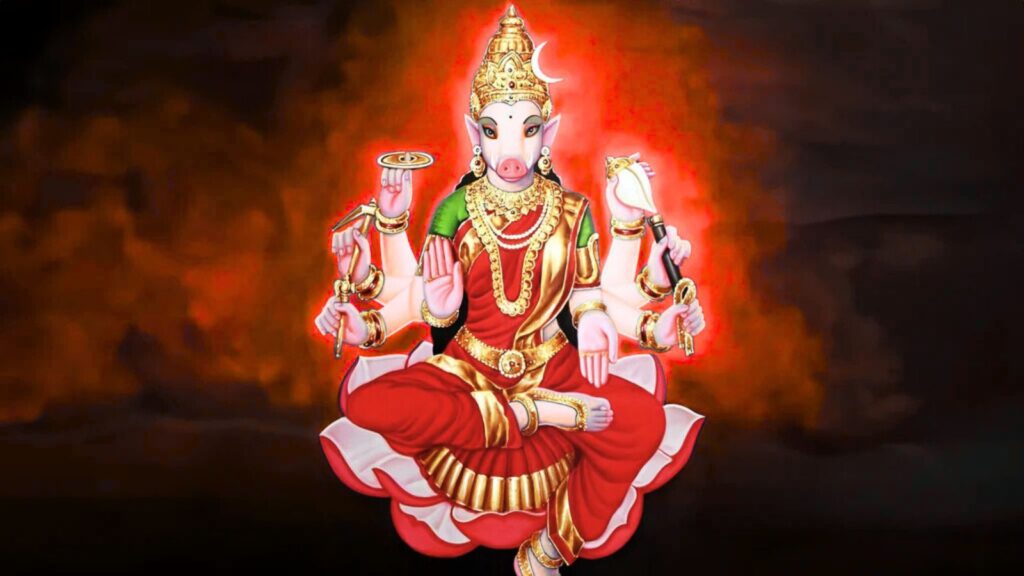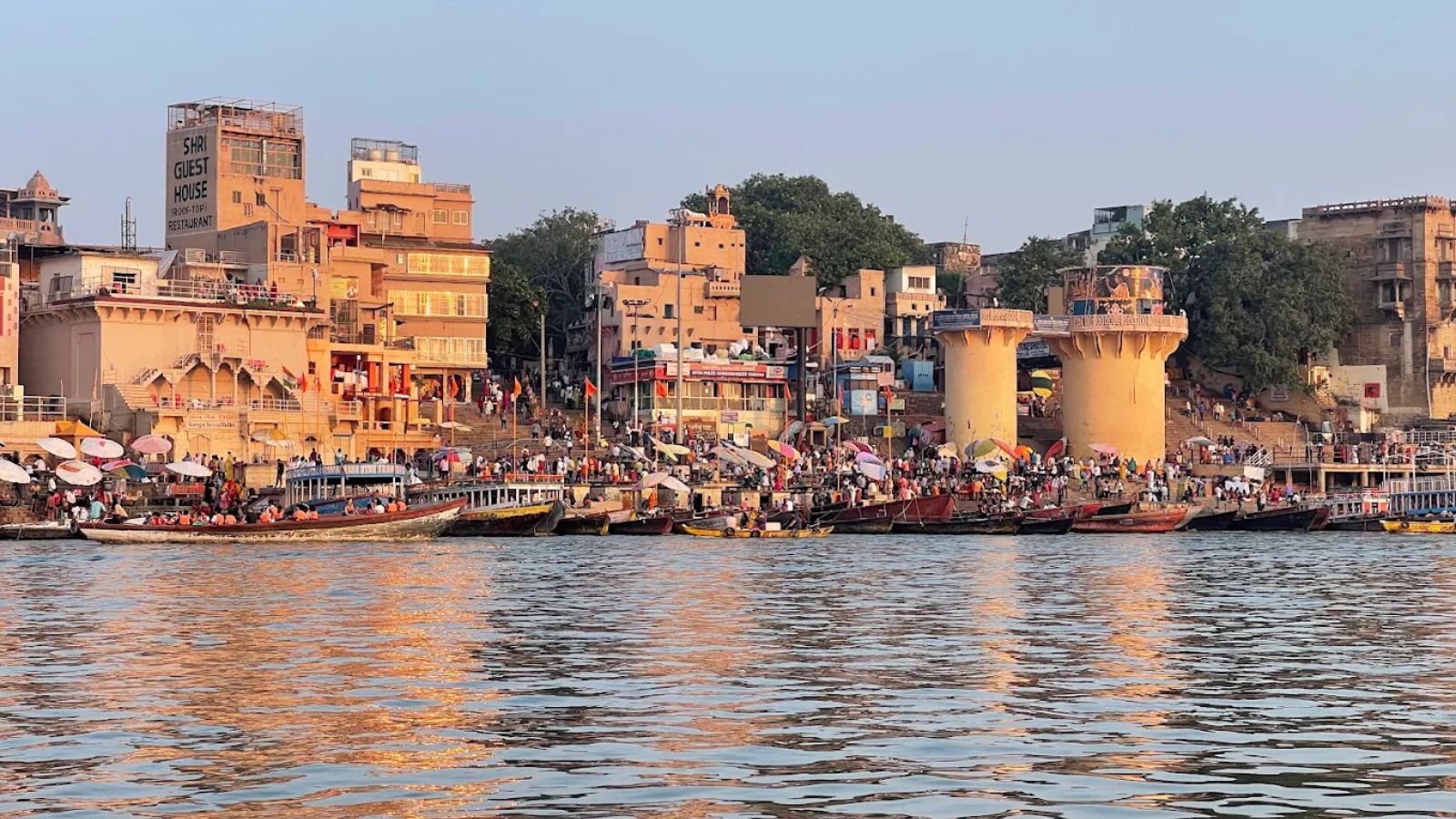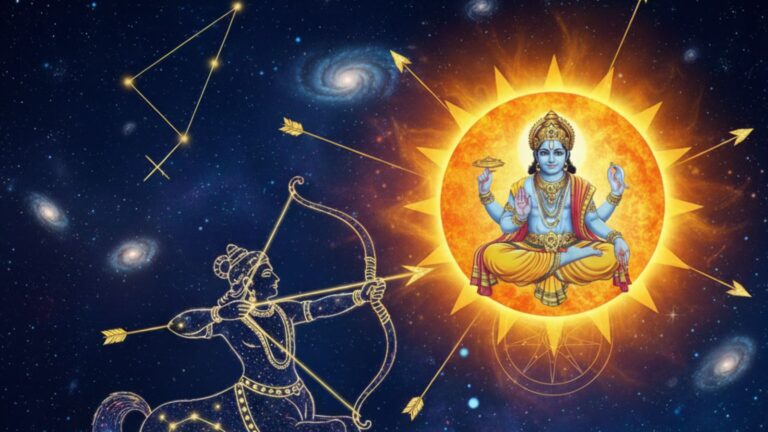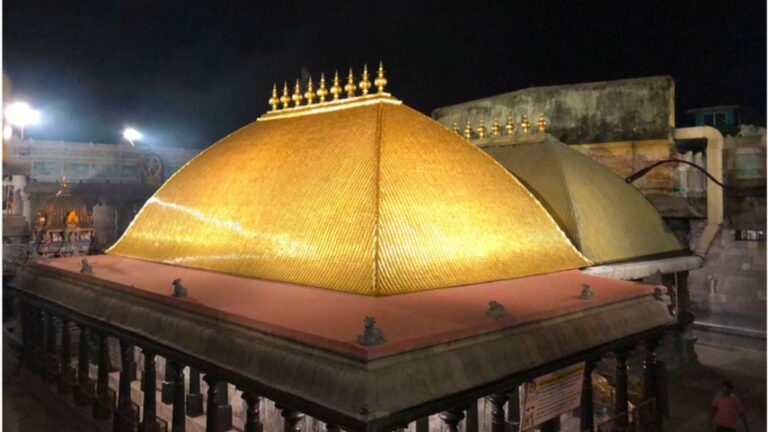Varahi Ghat in Varanasi is named after Goddess Varahi, one of the Sapta Matrikas or seven mother goddesses in Hindu tradition, often depicted with the face of a boar. The ghat derives its identity from the Sri Varahi Devi Temple located nearby, where she is worshipped as a fierce protector and granter of spiritual strength.
Historically, this ghat has been associated with Tantric practices, as Varahi is considered a powerful deity in Shakta and Tantric traditions. Devotees believe that worship at this site brings protection from negative forces and aids in spiritual advancement.

Varahi is regarded as the guardian of Varanasi, watching over the city at night and returning to her temple at dawn. Her role as “gram devata” beautifully interwines with her dual iconography as both destroyer of evil and benevolent mother. She is portrayed bearing swords and a discus, crowned with a Karanda Mukuta and sometimes shown dancing or wielding various weapons
While it may not attract the same crowds as the more prominent ghats, Varahi Ghat holds an important place in the religious landscape of Varanasi, representing the city’s layered traditions that honor both the fierce and benevolent aspects of the divine feminine.
Other places nearby
- Kashi Vishwanath Temple (~ 700 m): Sacred Jyotirlinga and the most revered Shiva shrine in Varanasi.
- Manikarnika Ghat (~ 300 m): The main cremation ghat, believed to grant moksha.
- Scindia Ghat (~ 200 m): Famous for its partially submerged Shiva temple.
- Nepali Mandir (~ 400 m): A pagoda-style Shiva temple with intricate wood carvings.
- Dashashwamedh Ghat (~ 900 m): Lively ghat known for the grand Ganga Aarti.
Pic Credits: Markus Walter



